You know what time it is when you have guys celebrating that the last GPA sale is only down 7% from the sale before; I actually had this conversation with a guy who seemed somewhat relieved at that result. Never mind that it was the third continuous lower sale for the book. Still, perhaps he’s right, perhaps people are sensing that the prices are close to where they should be at the moment. It all varies from book to book of course but the general theme should still hold. I’m still preaching first appearances, cover appeal, character and title viability and more and more I’m focusing on scarcity.
We’ve rebranded the god-awful moniker of internationalcollectiblesexchange into the less puzzling and more direct ICE Collectibles. Our website for ICE is now icecollectibles.com and our eBay handle is icecollectibles. We’ve made the changes just in time to go to Fan Expo with fancy new signs and glossy two-sided postcards. Remember to visit the booth if you are in Toronto for the show. GAH! I still don’t have a booth number, I’ll get it into next Monday’s post.
What a great stack of comics I sifted through for next week’s eBay auctions.
I was checking Ace Comics #64, from 1942, for completeness when I realized just how poorly the lame cover hints at all the goodness inside. Alex Raymond’s Jungle Jim, Hal Foster’s Prince Valiant, Lee Falk’s Phantom, Chic Young’s Blondie and more are there waiting for you if only that cover had somehow grabbed your attention.
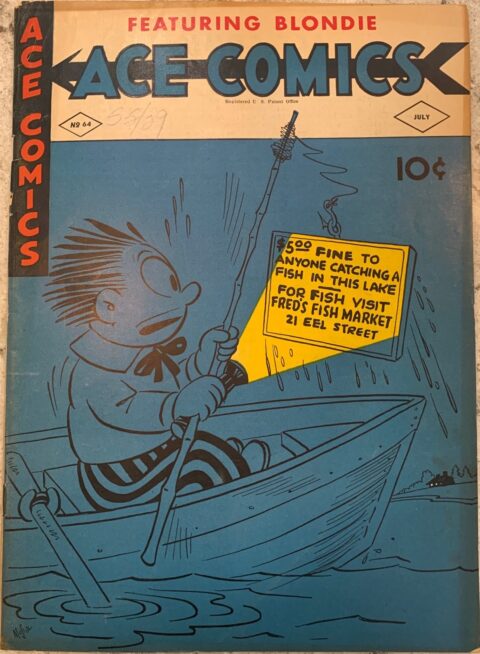
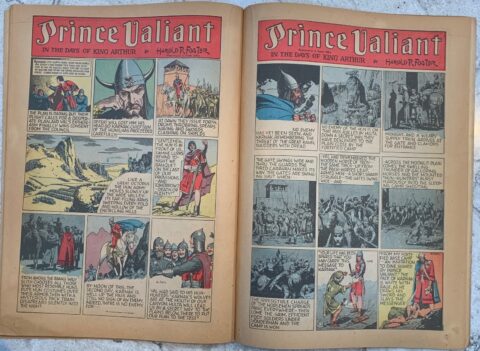
Our ad of the week comes from the back cover of Golden Legacy #5. Golden Legacy was the main title for a line of educational comics that featured African American history, they were published by Fitzgerald Publishing Co. from 1966 to 1976. The comic books featured biographies from noted historical figures like Harriet Tubman, Thurgood Marshall, Martin Luther King Jr and more. I read that over nine million comics were produced from this series, the embarrassing part is that I can’t remember coming across much of these before, at least not a nice run like the one I have going up on eBay next week. Fitzgerald Publishing landed Coca-Cola and a sponsor which is evident in this ad on the back cover of issue #5, I don’t know what I like more, the kid’s bass or the guy’s jacket.
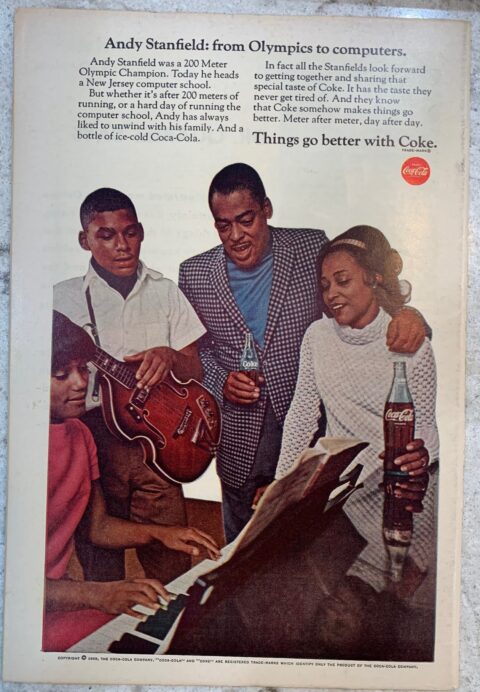
How about this two-page spread from Action Comics #45, those early DCs had so many backup stories in them providing us lots of cool splash pages throughout the books. I remember a couple of years back when I did my weekly Splash Pages, I’d have a tough time picking a splash page from one of those thick, fat early 1940s comics.
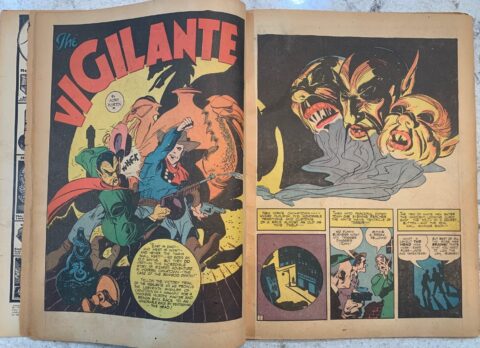
Last night our first weekly auction as icecollectibles ended with a flurry. Our CGC 5.0 copy of Tales to Astonish #44 closed at $997 USD, down from the July sale of $1,060. My handy dandy calculator tells me that is a 6% drop: heck, we’re doing better than the guy at the beginning of this post, he was happy with a 7% drop!
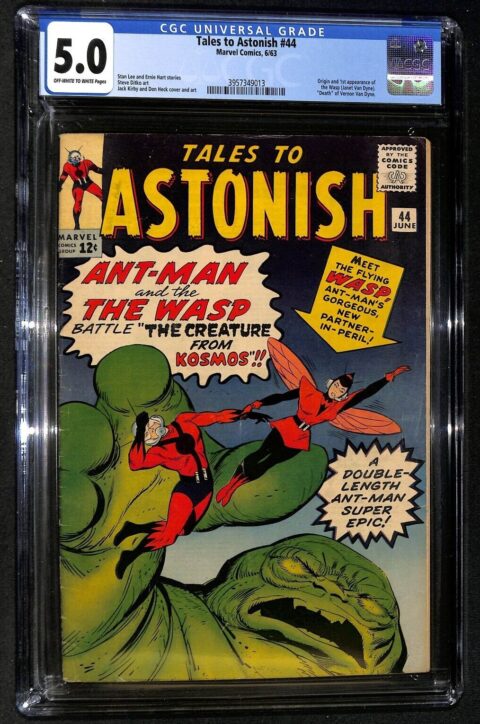

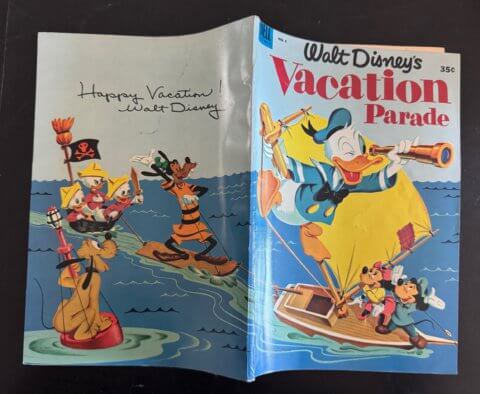
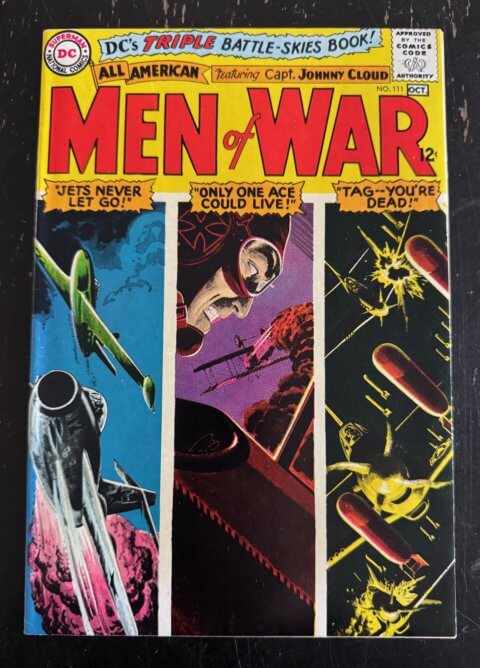
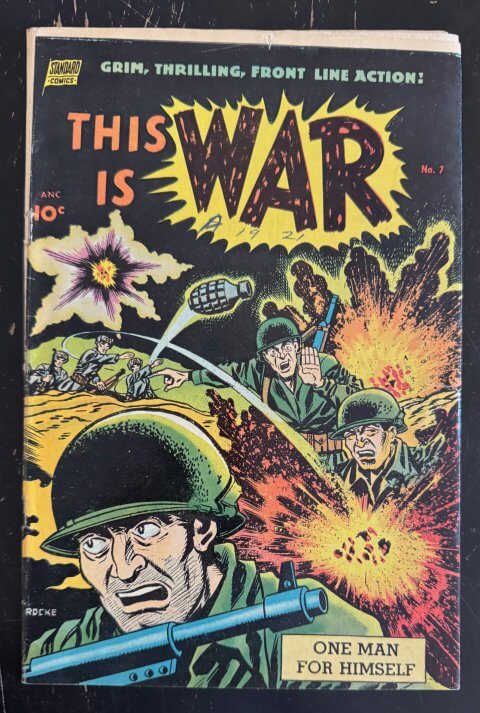
“and more and more I’m focusing on scarcity” – please see comments from Chris Meli from 2014 to present. When people wake up to the scarcity of the core DC titles from 1953-1956, I will get “I told you so” tatooed on my forehead. Last night’s sales of mid-sixties Batmans graded 9.6 is another example of people waking up to this. These are run books (albeit with nostalgic covers) going for $2000-$4000 because there have been three 9.6s at the top for years, and there aren’t going to be any more.
Speaking of scarcity – I notice people still listening to Gerber after thirty-five years – what’s with that? There are situations where there are about twenty graded of a Gerber nine, while only ten graded of a Gerber four in a neighboring issue (say #30 and #31, just to pick completely random numbers), and people bid like crazy for the Gerber nine, and forget about the Gerber four. Do they really believe Gerber’s anecdotal observations are better than twenty years of CGC population-building? I love Gerber’s books but I take those scarcity numbers as at best a crude starting estimate.
“Things go better with Coke” is unfortunate.
That Vigilante splash is wonderful, although the thick borders confused me at first – really too bad – at least he used the circular light and smoke to connect the two pages.
I didn’t realize that the TTA #44 was from you, I was helping out, trying to support my books. I estimated $1170. The book that is really hurting is FF #67 – even in good grades. Another semi-stinker is Thor #134, although that had such a run-up that I can sort of understand.
Chris! Thanks for reminding me about those DC books…
I have a few Wonder Woman issues from that era in mid-low grade and have always been interested in what books are a part of those lean years. Is there a list somewhere online?
My collecting has gone astray since the boom and piecing out most of my books. This seems like something that would be fun to chase and bring more fulfillment than following current books.
Any help/advice would be awesome! Thanks!!
Tim, if you want to do serious research go here:
http://cgcdata.com/cgc/
The interface is clunky but the data is fantastic. It allows you to see CGC populations for a range of issues, not just one issue like the CGC census portal (which is made for amateurs). Also crucially it gives historical CGC populations, which can really give you a sense if there are many more books above a certain grade out there. Generally I would say that if a book in a certain grade was worth $1000 ten years ago, and the population hasn’t increased since, it’s very unlikely there are many more out there in that grade or above. You can also see the boom in the population as a book becomes hot – everybody should have a look at this before buying a modern book for $500 that used to be worth $50 – there are likely a ton in the pipeline.
For Wonder Woman in particular, it looks like #55-#90 (Sep 1952 to May 1957) is roughly the toughest period. Wonder Woman (and Sensation even more so) are tough throughout. Clearer is Detective; there I see #186-#210 (Aug 1952 to Aug 1954) as the main drought period. Generally you see the same patterns – the “name” books (Superman, Batman, Wonder Woman) are more plentiful than the “collection” books (Action, Detective, Sensation), and all are very tough from mid-1952 to right after the code came in (Mar 1955). I attribute this to Seduction and Kefauver, leading to both reduced demand and destruction of books. (Also the general lameness of DC in the period…)
I have been chasing this period for years but the opportunities are few (as expected) and the prices are high. You will pay 9.8 prices for 8.0s. But per my argument above, in a lot of cases that 8.0 will be the nicest book in existence. I have two Kenora dinner jackets; the 7.5 is the highest grade out there, and unless a somewhat later Promise collection comes to light, I am pretty sure it will remain the highest.
Interesting business decision:
Consultant 1: The problem is that their business name is way too long!
Consultant 2: Hold up, I thought it was the fact it contains the term ‘sexchange’ in the wording?
Consultant 3: how about we just shorten it? Use an acronym?
Consultant 1: ICE????
Consultant 2: ummm, isn’t that the street name of a highly addictive and destructive drug otherwise known as meth amphetamine?
Consultant 3: hey, Walter did tell me that this comic collecting thing is highly addictive! Let’s go grab some lunch.
Spider has obviously tapped my phone, and I thought of ICEsexchange but thought it too post procedural…
Chris, the Gerber stuff doesn’t make sense I know but guys are so set to these old wives tales, similar is this “newsstand copy”, at the beginning most were newsstand and by the end very few were newsstand but all you have to do is put “newsstand” on an auction and it gets automatic bids. I know you agree but I just want to point out scarcity alone may not be enough sometimes, we still need those other desirable factors in the mix for true value.
Your Vigilante sample is wonderful work by Mort Meskin. In the later fifties and early sixties, poor Mort had problems at DC, where he stuck it out for so long. And he worked under Superman editor Mort Weisinger, and crappy editor Jack Harris doing lame stories for Tales of the Unexpected, House of Mystery and House of Secrets. The stories of Weisinger abusing Mort are unfortuantely abundant. His pared down, unimaginative later style was very bland.
But in the 1940s, oh, what a good artist. He often did double-page scenes like the one above. He mostly worked on back up strips, but often was the best work in a typical DC comic, with imaginative work like this. I know I brought it up before, but he collaborated with Jerry Robinson on several later Black Terror and even a Fightly Yank story or two, in the late 40s, and they are extraordinary. He worked on MLJ as early as 1940, and I think also for Hillman in Silver Streak, with their superheroes but he came into his own on Vigilanate and also on Johnny Quick, a Flash-like speedster that he had a long run with.
Reprint titles like Ace, Tip Top, King, Super, Sparkler, and Magic were very popular in the early days of collecting, i.e. in the sixties, since virtually none of the fine adventure strips and even the humor strips in them had been reprinted. Then beginning around 1968 or so, Woody Gelman (who was a very minor 1940s artist himself) started Nostalgia Press and began reprinting Prince Valiant, Mandrake, Terry and the Pirates, Scorchy Smith and other strips. As more and more were reprinted, these “strip reprint” comics became the least-desired 1940s comics. But…many of these contained original material also. I’ve become a big fan of these, particularly in the last 5 or 10 years. They remain relatively cheap and contain a lot of surprises in their 64 and 52 page issues.
Titles like Popular and Sparkler (where you could find Tarzan by Hal Foster and Burne Hogarth) began to feature more and more original material, including superheroes. Professor Supermind and The Owl, who moved over after a long run (and cover features) in Crackajack to Popular. Triple Terror and Mirror Man in Tip Top had long interesting runs, again adapting from pre-war superhero stories to fighting Nazis in Europe). Sparkman in Sparkler went from a very weird hero with electricity coming from his fingers, to a fairly ordinary serviceman fighting in Europe. In Super there was adventure hero Jim Ellis (by the underrated artist Rick Fletcher), Magic Morro, Clyde Beatty. The Funnies had some fine very early work by Alden (or Al) McWilliams, who went on to draw Twin Earths in the newspapers. The Funnies also was the first (and only) time John Carter of Mars made it into comics, by John Coleman Burroughs, ERB’s son. Hi-Spot comics did one solo issue featuring ERB’s David Innes of Pellucidar, although adventures inside the earth was not an uncommon theme in other adventure strips.
As I write this, I can see this is fodder for an interesting article since so many of these secondary characters are forgotten. There is a good book from MacFarland called Secondary Superheroes that covers exactly these, but typical of MacFarland, it is overpriced ($80 in softcover) so it’s only going to people really, really interested. But I highly recommend it.
What got me going collecting these titles, along with the original strips, was also the original work there by Jimmy Thompson. He did wonderful 2 and 4 page Indian strips like Redmen and Indian Lore for many years, as well as some of the best, large-sized text illustrations of the time. Some of the text stories, such as in Ace, were multi-part Indian stories, always very sympathetic to native americans and often with no white men in sight, thankfully). Jimmy had a long run in King Comics, which in my opinion is one of the very best of all the “strip reprint” titles. King was also one of the earliest, after it all got started with Famous Funnies.
Jimmy also worked for Eastern (Sugar Bowl, Club ‘16’, Juke Box, Heroic), DC (Western Comics) and even at Timely, where he did a couple dozen The Human Torch and Sub-Mariner stories. I’ve gone on about before here before, hidden gems during the war years after Timely lost most of their best artists to the war effort. But Roy Thomas told me he didn’t like Jimmy’s versions. But I love ‘em.
These strip reprint comics, mostly published by Dell, Eastern (aka Famous Funnies) and David McKay, also ran a great many strips that are very good but have rarely if ever been reprinted: just a handful of examples would be Tailspin Tommy, Brick Bradford, Connie (which has a killer sci-fi sequence serialized in Famous Funnies around #78 to 100), Lone Ranger (never yet collected, can you believe it?), Secret Agent X-9, War on Crime…
Another example is Mandrake the Magician, the granddaddy of all magician strips created by Lee Falk, who also created and wrote The Phantom. Mandrake reprints began in King Comics #1, April 1936, and then moved to Magic Comics when that title began in 1939. It was the cover feature for more than two years there. Mandrake was an incredibly good strip, with science fiction and fantasy elements and lost worlds, comparable at times with Flash Gordon’s early days. Phil Davis’ artwork was also nearly as good as Raymond’s, if not equally good, in those first few years. I love those strips. But only a couple of Mandrake collections have appeared over the years, and rare in full color until Titan did a couple a few years ago then obviously didn’t get enough sales to keep going). And it never helps with these strips when they devolve into rote, dull adventures (even classics like The Phantom and Flash Gordon) after several decades.
Even Famous Funnies, the first and longest running of all the reprint comics, got into the original strips such as pretty wild Man o’ Metal by H.G. Peter. Peter was there moonlighting from Wonder Woman and Sensation’s WW stories. Peter drew WW until his death in 1958, but by then his work was almost a parody of his early days, sadly, so it was a relief when Andru and Esposito brought a fresh look to Wonder Woman for the Silver Age. But man, was Peter prolific in the 40s—on other oddball heroes as well as one his highly collectible Wonder Woman work. His quirky, bold style has an appeal of it’s own.
Good thing I grabbed a beer before I sat down to read Bud’s reply, fantastic stuff Bud. Great review of Meskin, how would anybody know these fine details without you providing them Bud!!
The Secondary Heroes sounds like a great book, filled with discoveries, I have a feeling they should make on for the tretiary heroes as well.
I owned a CGC 4.0 Tip Top #1 a few years back, it featured a lot of reprints including Tarzan’s 1st appearance in comic books.
Bud, Jimmy Thompson was a Canadian born in Toronto in 1907.
Damn Bud… you make me want to keep collecting comics rather then sell them off! As to sales… and in keeping with your observations on comic sales Walt… my sales are down as well with books coming in lower then expectations ( glad I bought them 45-50 years ago so am still turning a profit)! What is most baffling are the people who text me an offer that is so low its laughable! One guy offered me $26 for a book that sold at $225. He even texted back when I didn’t respond and asked for a counter offer. I texted back that I thought the offer was either wishful thinking or an insult.
I have always loved those newspaper strip reprint comics & consider them some of the best books published in the golden age ! Many newspaper strips were written and drawn on a level far higher than the average superhero comic and still stand up today. Some of the strips that can be found within these books still have not been collected and more than likely never will. I particularly love The Katzenjammer Kids/Captain & the Kids by Dirks/Knerr and have lost hope that these fantastic slapstick comedies will ever see a dedicated reprinting in my lifetime. Of course, these strips lasted 50 or 60 years each and such an undertaking would be monumental ! Of course, reader interest has to be there, or the effort will be a lost cause.
I have been chipping away at several titles over the last four decades, with ACE and SPARKLER being my focus, due to their reprinting of the Katzenjammer Kids strips. They remain affordable to this day, with only a few iconic covers [ Tarzan by Hogarth etc ] being elevated to lofty levels. The reprint books issued prior to the US entry into WW2 are by far the best, as they are a full 68 pages, slightly larger format & they fit an entire newspaper Sunday page on one full comic book page !!! Yep, this makes some of the finer details and even the word balloons hard to see with my aging eyes & I have to use a magnifying glass to absorb all that goodness, but it is worth the effort ! Post war books would take a Sunday page or a few dailies, and spread them out over 5 or 6 pages of the comic book, thus giving you less to read, as you would only have 4 to 6 panels to a page ! Those early books are a treat and are well worth hunting down, plus..as Bud says, there is lots of new material mixed in with the reprints including some really fun superhero stuff. Keep in mind, folks- that The Phantom made his first appearance in comic books in ACE #11 [ 2/1938 ], beating Superman to the punch by four months, Of course, the Phantom had already been running in the newspapers since 1936, and his appearance in ACE #11 is a reprinting of the first six dailies.
Many of these books remain affordable but I have noticed an up-tick of interest ‘out there’ lately & am routinely beaten on ebay. In spite of this financial thrashing, I have still been able to pick up a few issues that I need to finish my collection recently. Ah yes, that pipe-dream- It will never happen, but I flail onwards towards that lofty ambition!
Walt ! -Yes, many of these covers are lame!…they are simple and basic, and they were created this way intentionally to stand out on the newsstand against their more cluttered competitors! Jack Cole’s Plastic Man follows the same philosophy with lean, uncluttered cover designs to aid in quick identification of that book on the newsstand! In fact, many QUALITY comic books such as FEATURE FUNNIES & FEATURE COMICS follow this same thought process with simple compositions & large titles to enable their young fans to find their chosen literature quickly and effectively on those bulging newsstands ! We judge books by their covers nowadays, but back then the cover served a different purpose. A recent group of nice,early slabbed Plastic Man comics sold very poorly at Heritage recently, as is normal sadly, and most issues sold for guide or less due to those very simple cover designs. Yet, if you crack these things open & actually look at what is inside, you will be blown away by what you see ! Jack Cole’s work on Plastic Man is brilliant, but collector interest does not seem to pick up until we get into mid-war issues and beyond when he begins to render more action-packed covers, especially those silly ‘horror issues’ during the 1950’s.
Finally- you guys need to remember that the comic collecting hobby practically began with these strip reprint comics ! They had already accrued value and many collectors were seeking them out passionately by the time Kirby, Ditko and Lee began creating the Marvel Universe ! Early fandom and early Overstreet Price Guides report on the interest bequeathed upon these books by those old-time collectors and the values of certain issues equaled that of early Superman comics ! There was a different generation collecting comics back then & they valued a different series of books more highly than those that are valued by the collector/investors of today. Back then, Classics Illustrated #43- Great Expectations- was considered a Holy Grail & several dealers used it as a hook in their advertisements in early Overstreet Price Guides. Nowadays, you can’t give #43 away for free & even chumps like me own both editions of that book in nice condition !!
Gee, LF; If you want to see them tom me, I’ll gladly take them. (:
Let me try that again. Gee, LF; if you want to send them to me, I’ll gladly take them. (:
Nice try Klaus!- I got my copies a couple years back from Heritage for about one third to one half of guide. My first edition is a nice FINE. my second edition is about GVG [ but looks very nice !]. Now, you just know that if you can get a book from Heritage from one third to one half of guide [ including their buyer’s fee ], it ain’t hot ! I didn’t buy these for investment, I simply like Classics Illustrated. I grew up on them- I even had the UK edition of The Canterville Ghost when I was a kid, which was never issued in the USA. Wish I had that book now.
Great Expectations is not rare. Heritage alone has sold a shwack of copies in the last few years, but back in the 1970’s it was considered a grail book & many dealers used it’s cover art to draw attention to their ads. Time has changed & the internet has shown us that this book ain;t rare. Even if it was rare, nobody cares- everyone wants Hulk #181 now!
I don’t have one of those either.
Keep plugging away Gerald, after a while people will get to know you and your books, return customers are always an added bonus to doing good honest business.
I hear you Live Frog, with your loud, separated exclamation marks! Like you say, cover are what sells today and if I’m selling, I need a snappy cover to boast about.